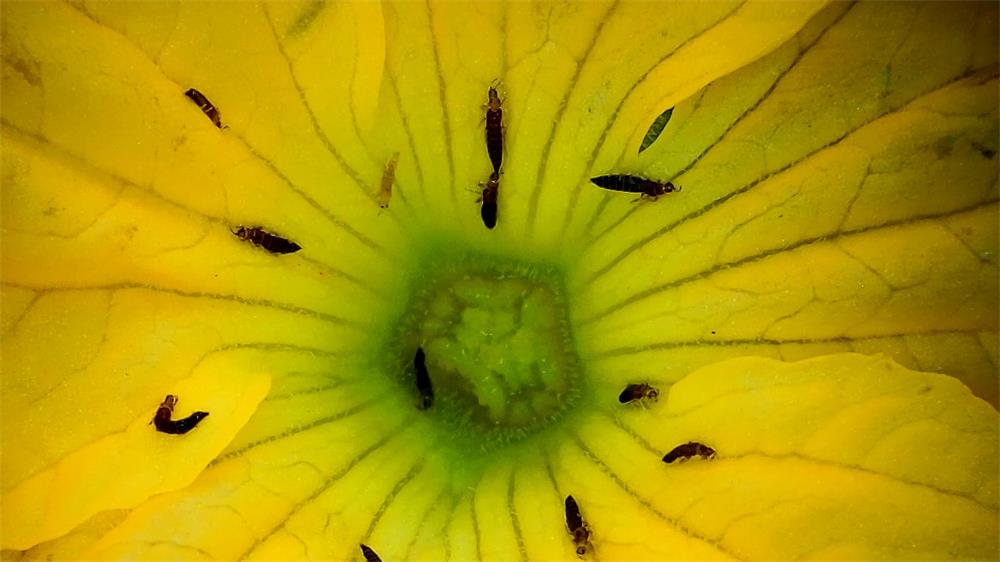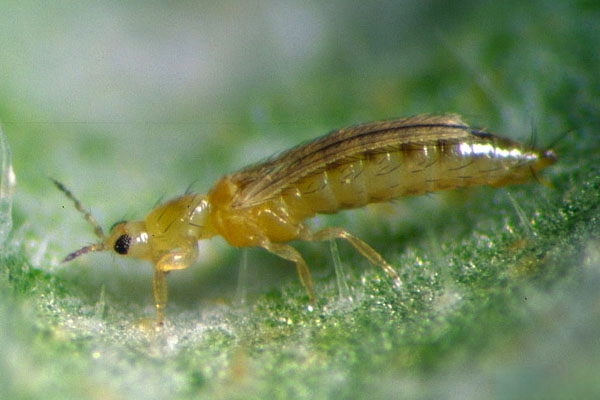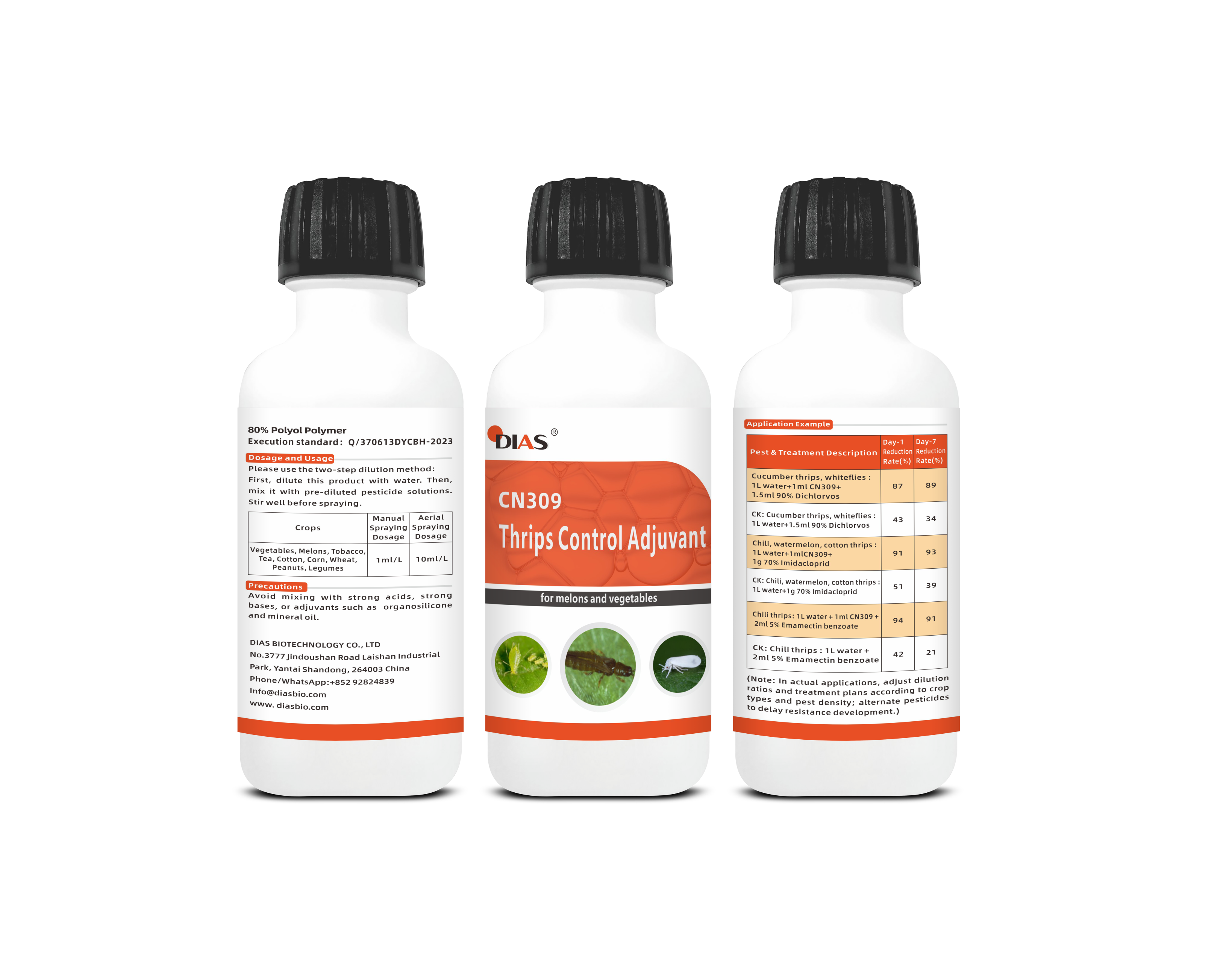Introduction
Thrips have become one of the most difficult resistant pests in modern agriculture, particularly in key production regions of China such as Guangxi (cowpea thrips), Shandong (greenhouse vegetables), and Hainan (mango thrips). For growers of mango, banana, vegetables, and flowers, effective thrips control is a top priority. This article shares field-proven strategies, emphasizing how the right pesticide adjuvant can dramatically improve efficiency—valuable guidance for both farmers and agrochemical companies.

Understanding Thrips: Species and Hosts
Thrips (Thysanoptera) are tiny insects (0.5–5 mm) that attack vegetables (cucumber, chili pepper, tomato, eggplant), fruit crops (mango, papaya, banana, dragon fruit), and flowers (rose). Their wide host range makes thrips management in greenhouse vegetables and fruit orchards especially challenging.

The Damage Caused by Thrips
· Direct damage: Feeding leads to curled leaves, scarred or deformed fruits, and fruit drop, reducing both yield and quality.
· Indirect damage: Thrips transmit viral diseases such as Tomato Spotted Wilt Virus, increasing losses.

Why Are Thrips Hard to Control?
· Late intervention – Many farmers only notice thrips after leaf curling or fruit scarring. By then, populations are harder to control.
· Overuse of single insecticides – Repeated heavy use of the same product accelerates resistance (e.g., resistance to emamectin benzoate in Shouguang).
· Poor spraying practices – Spraying after flowers close means flower thrips remain protected inside the flower.
· Illegal additives – Some suppliers add unregistered active ingredients to achieve “quick kill,” fueling stronger resistant thrips populations.

Five Key Measures for Effective Thrips Control
1. Early prevention – The most economical solution is spraying at the initial stage of thrips infestation. Keyword: early thrips management.
2. Seedling root treatment – Soil drenching before transplanting provides systemic protection.
3. Rotate and mix insecticides – Combine products (spinetoram, cyantraniliprole, pyriproxyfen, etc.) and rotate modes of action to slow resistance.
4. Use of agricultural adjuvants – Farmers often describe conventional spraying as “bathing thrips without killing them.” Adding the right adjuvant for thrips control improves penetration and adhesion, restoring insecticide performance.
5. Precision application – Follow the principle of “one pest–one crop–one solution.” This ensures safe and effective control of thrips on mango, chili, cucumber, or rose. Keyword: crop-specific thrips control solutions.

DIAS® Next-Generation Adjuvant for Resistant Thrips
To address severe resistance in thrips, DIAS® has developed a green, biodegradable agricultural adjuvant specifically for thrips management.
Mode of action: Ultra-fine surfactant penetrates the insect cuticle within 3–5 seconds.
Advantages: Safe for sensitive crops, stable across climates, fast-acting, and eco-friendly.
Applications: Especially effective for thrips control in mango, greenhouse vegetables, and organic farming thrips solutions.
Application Guidelines for Thrips Management
Timing: For flower thrips, spray before 9 a.m. when flowers are open. Afternoon spraying is far less effective.
Coverage: Thrips hide in flowers, fruits, shoots, and even soil. Apply sprays evenly and thoroughly—no untreated spots.
Dilution examples:
Citrus, dragon fruit: 1:3000 dilution
Mango, banana, papaya: 1:1500 dilution
Rose, chili, durian scale insects: 1:1000 dilution
⚠️ Note:
· Thrips adjuvants are a specialized category of pesticide adjuvants, classified under synergistic enhancers. They are used in agricultural production to assist conventional pesticides by improving their efficacy against thrips and helping to mitigate pesticide resistance in thrips populations.
· Adjuvants are powerful tools, but pesticide adjuvants for thrips are always complementary to insecticides—not replacements.

About DIAS®
DIAS is a technology-driven company specializing in the R&D, production, and sales of eco-friendly agricultural adjuvants. With a portfolio of 300+ formulations, we provide solutions for resistant pests and diseases including thrips, whiteflies, spider mites, aphids, scales, powdery mildew, and downy mildew.
We strictly comply with FAO and Ministry of Agriculture regulations, never using hidden or banned ingredients. Together with our partners, we are committed to sustainable agriculture and responsible pest management worldwide.